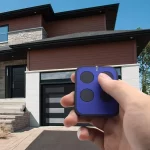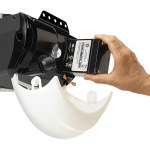A garage door opener replacement is a significant home maintenance task that ensures the functionality, security, and convenience of your garage door system. Over time, openers can wear out, become outdated, or fail due to mechanical issues. Understanding when and how to replace your garage door opener can save you from inconvenient disruptions and costly repairs. In this comprehensive guide, we will explore the reasons for replacing your garage door opener, the different types available, the replacement process, maintenance tips, and much more to help you make an informed decision.
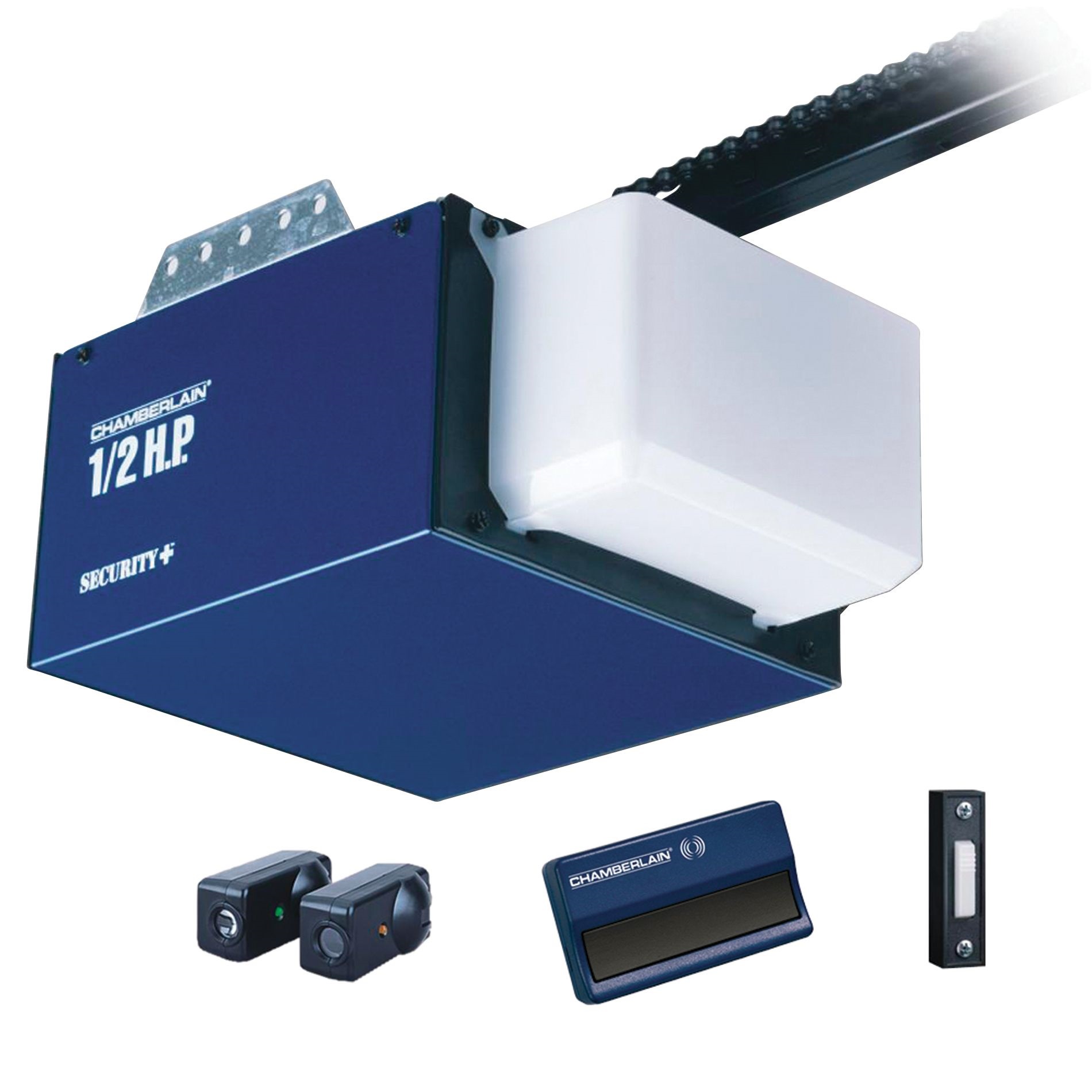 Signs That Your Garage Door Opener Needs Replacement
Signs That Your Garage Door Opener Needs Replacement
Garage door openers are essential for convenience and security. However, they don’t last forever. Identifying issues early can save time and money. Here are key signs your garage door opener may need replacement.
Common Malfunctions and Failures
- Door Fails to Open or Close: If your garage door doesn’t move, the opener may be faulty.
- Inconsistent Operations: Sometimes the door functions, and other times it doesn’t. This inconsistency signals a problem.
- Remote or Keypad Issues: If replacing batteries doesn’t help, the opener’s circuitry might be damaged.
- Frequent Stops or Reversals: The door may stop midway or reverse without warning if the opener is malfunctioning.
These signs indicate that repairs might not be enough. A replacement may be the best option.
Noises and Irregular Movements
- Unusual Noises: Grinding, squealing, or rattling sounds can signal motor or gear wear.
- Jerky Movements: The door may move unevenly or jerk during operation. This suggests mechanical issues.
- Slow Response Time: A delay in opener response might point to an outdated unit or internal damage.
- Sagging Door: If the door sags or doesn’t close completely, the opener may not provide enough power.
If you notice these problems, inspect your opener. Replacing it could improve your garage’s functionality and safety.
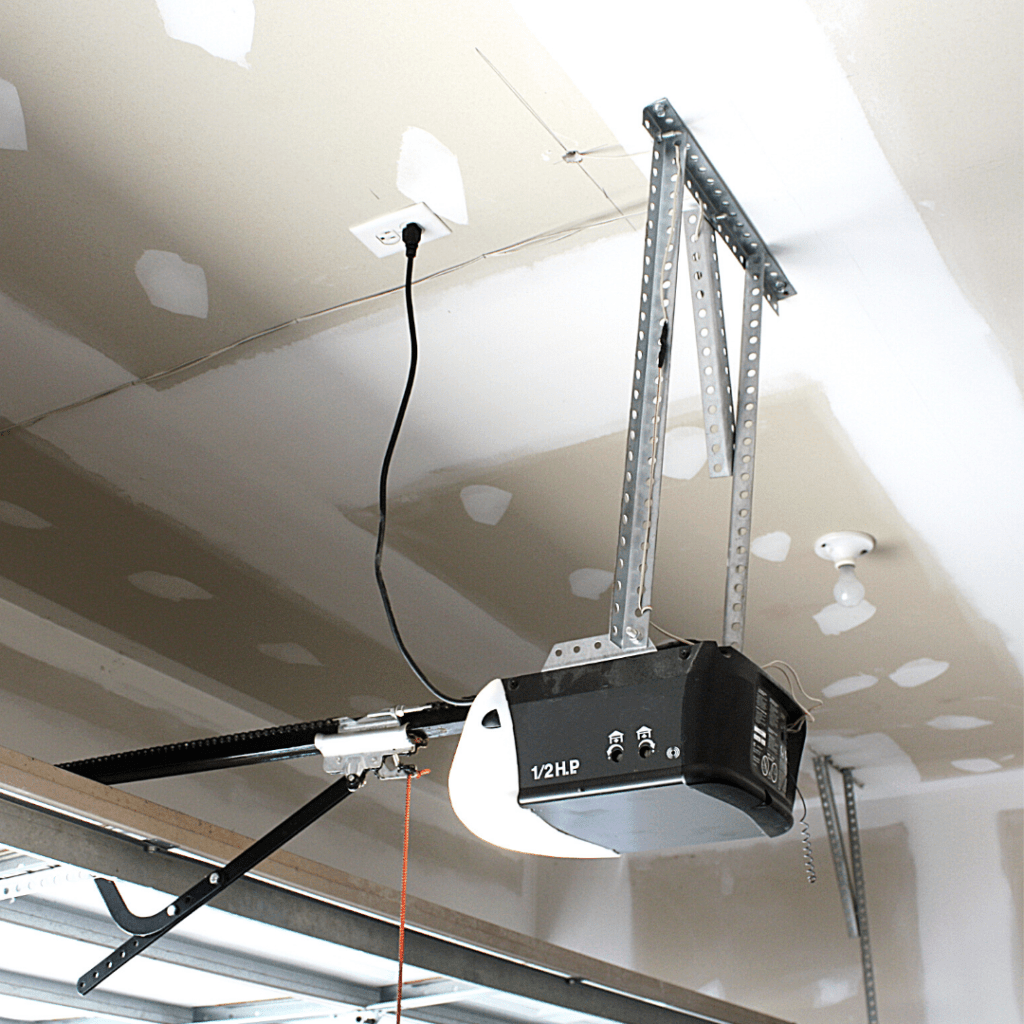 Choosing the Right Garage Door Opener
Choosing the Right Garage Door Opener
Selecting the right garage door opener is essential for reliability and smooth operation. Not all openers suit every garage, so understanding the differences is critical. Let’s explore the main types and key features to consider.
Types of Garage Door Openers: Chain, Belt, and Screw Drive
- Chain Drive Openers: Chain drive openers use a metal chain to move your garage door. They are durable and affordable but can be noisy. These are ideal for detached garages where noise isn’t a concern.
- Belt Drive Openers: Belt drive openers operate with rubber belts, making them quieter than chain drives. They require less maintenance and are perfect for garages close to living spaces.
- Screw Drive Openers: Screw drive openers use a threaded steel rod for motion. They are reliable and need minimal maintenance. However, they may not be ideal in extreme climates.
Features to Consider: Smart Openers, Battery Backup, and More
- Smart Openers: These come with Wi-Fi connectivity, enabling smartphone control. You can monitor and operate your garage door remotely for added convenience.
- Battery Backup: With battery backup, the opener works during power outages. This feature ensures uninterrupted access.
- Security Features: Look for rolling-code technology for better security. It changes the code each time you use the remote.
- Horsepower Ratings: Choose horsepower suitable for your door’s weight. Heavier doors need more powerful openers.
- Lighting Options: Some openers feature built-in LED lights for better garage illumination. This feature improves safety at night.
Selecting a garage door opener with the right type and features enhances functionality and convenience. Research thoroughly to find the best fit for your needs and your budget.
Tools and Materials Needed for Replacement
Proper tools and materials make garage door opener replacement smoother. Gathering all items beforehand saves time and energy.
Essential Tools for the Job
- Screwdrivers: You’ll need both flathead and Phillips screwdrivers for screws and brackets.
- Wrenches: Adjustable wrenches help loosen and tighten nuts and bolts efficiently.
- Power Drill: A power drill makes installing screws faster and easier.
- Stepladder: The ladder allows you to access the garage ceiling safely.
- Measuring Tape: Accurate measurements ensure proper alignment during installation.
- Level Tool: This ensures the opener and rail are mounted straight.
- Clamps: Use clamps to secure the garage door in place during replacement.
- Pliers: Needle-nose and standard pliers are helpful for wire and spring adjustments.
- Safety Glasses and Gloves: Protect your eyes and hands while working.
Having these tools on hand ensures a smoother and safer garage door opener replacement process.
Accessories and Replacement Parts
- Garage Door Opener Kit: Includes the motor unit, rail assembly, and other essential components.
- Mounting Hardware: Includes screws, bolts, and brackets required for installation.
- Wall-Mounted Control Panel: Typically part of the opener kit for indoor operation.
- Safety Sensors: They ensure the door doesn’t close on objects or people.
- Remote Controls: Additional remotes may be useful for multiple users in your household.
- Battery Backup: An optional accessory for uninterrupted operation during power outages.
- Lighting Components: Some openers include integrated LED lights or lightbulb sockets.
- Wiring: Ensure you have the right wires for connecting the opener to power and sensors.
Having both tools and accessories on-hand ensures proper installation and functionality of your replacement garage door opener.
Step-by-Step Guide to Replacing a Garage Door Opener
Replacing a garage door opener can improve functionality and safety. Follow these steps for a successful installation.
Preparing for the Replacement Process
- Disconnect Power to the Opener: Turn off the power supply to avoid electrical accidents.
- Open the Garage Door: Raise the door fully and secure it using clamps.
- Gather Tools and Materials: Collect all essential tools and parts for the replacement process.
- Review the Instruction Manual: Study the new opener’s manual for installation guidelines.
- Ensure Safety Equipment: Wear safety glasses and gloves to protect yourself during the process.
Removing the Old Garage Door Opener
- Unplug the Existing Unit: Remove the power cord from the socket before starting.
- Detach Safety Sensors: Disconnect the sensors attached to the rails.
- Remove the Rail Assembly: Loosen bolts or screws holding the rail in place.
- Unscrew Mounting Brackets: Carefully take down the brackets securing the opener.
- Take Down the Motor Unit: Use a stepladder and gently lower the old motor.
Installing the New Garage Door Opener
- Position the Motor Unit: Mount the motor securely on the ceiling brackets.
- Attach the Rail Assembly: Connect the rail to the motor and align it properly.
- Install Safety Sensors: Place sensors on either side of the garage door tracks.
- Mount the Control Panel: Fix the panel inside the garage for easy operation.
- Connect Wiring: Attach the wires for both power and sensors accurately.
- Tighten Screws and Bolts: Ensure all parts are firmly secured in place.
Testing and Adjusting the New Opener
- Plug in the Opener: Reconnect the power supply to the motor unit.
- Test the Door Movement: Open and close the door several times to check operation.
- Adjust Sensors: Ensure the safety sensors are aligned correctly for optimal function.
- Set Limit Settings: Configure open and close limits using the control panel.
- Check Remote Control: Test remotes and ensure they operate without issues.
Following these simple steps ensures your garage door opener works efficiently and safely.
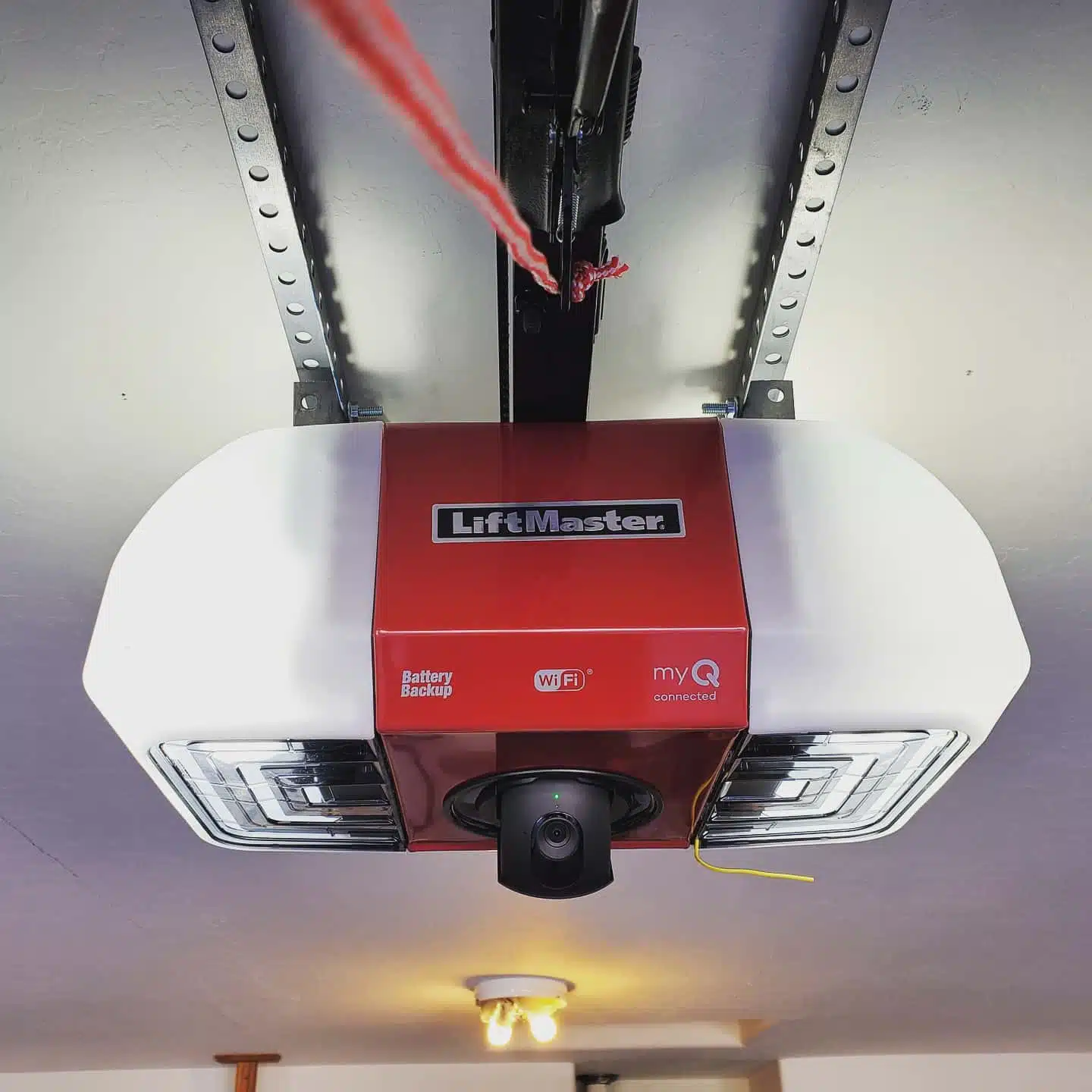 Safety Tips for Garage Door Opener Replacement
Safety Tips for Garage Door Opener Replacement
Replacing a garage door opener is not without risks. Proper safety measures can prevent accidents.
Precautions to Avoid Injuries
- Use Proper Safety Gear: Always wear safety glasses and gloves during the process.
- Secure the Garage Door: Use clamps to keep the door open while working.
- Avoid Working Alone: Have someone assist you, especially when handling heavy components.
- Use a Stable Ladder: Ensure your stepladder is in good condition and placed on a flat surface.
- Follow the Manual: Read the manual thoroughly and adhere to the manufacturer’s guidelines.
- Disconnect Power: Always unplug or turn off power to the opener before starting.
- Handle Heavy Parts Carefully: Lift the motor unit or heavy items with caution to avoid injuries.
- Check Tools and Equipment: Ensure all tools are functional and appropriate for the task.
Electrical Safety Guidelines
- Inspect Wiring: Check wires for damage before reconnecting them during installation.
- Turn Off the Circuit Breaker: Shut off the breaker providing power to the opener to avoid electrical shocks.
- Follow Grounding Requirements: Ground the system properly to ensure safe operation.
- Use Insulated Tools: Work with tools that have insulated handles when dealing with electrical components.
- Avoid Wet Areas: Ensure the work area is dry to prevent electrical hazards.
- Check Connections: Double-check all electrical connections before restoring power.
- Test the Safety Sensors: Make sure the sensors function correctly to prevent accidents.
By following these safety precautions, you can reduce risks and complete the project securely.
Cost of Replacing a Garage Door Opener
Replacing a garage door opener involves costs that vary based on the approach you choose. Understanding expenses can help you make an informed decision.
Average Costs for DIY vs Professional Installation
- DIY Installation:
- Costs range between $150 and $300 for the opener kit and tools.
- DIY saves on labor costs but demands time, effort, and basic technical skills.
- Professional Installation:
- Professionals charge between $250 and $500, including the opener and labor fees.
- Hiring an expert ensures proper installation and saves time.
Each option has pros and cons. DIY is economical, but professional help guarantees precision and adherence to safety standards.
Factors Influencing Replacement Costs
- Type of Garage Door Opener:
- Chain drive models are affordable ($150–$300), while belt drives cost more ($200–$450).
- Screw drive models often fall between these price ranges.
- Additional Features:
- Features like smart connectivity or battery backup increase the overall cost.
- Garage Door Size and Weight:
- Heavier or oversized doors may need high-horsepower openers, which are pricier.
- Labor Costs:
- Region and installer experience affect installation charges for professional services.
- Customization Needs:
- Custom openers or complex systems often require extra effort, raising costs.
- Upgrades and Accessories:
- Add-ons like extra remotes or advanced safety sensors can increase expenses.
Budgeting for opener replacement involves balancing features, installation type, and additional costs. Choose wisely for functionality and reliability.
 When to Call a Professional Installer
When to Call a Professional Installer
Replacing a garage door opener yourself can save money. However, some situations require professional help. Experts ensure proper installation and avoid potential problems.
Complex Installations and Custom Systems
- High-Tech Openers: Smart openers with advanced features may need professional setup.
- Heavy Garage Doors: Large or heavy doors require precise work and stronger openers.
- Custom Designs: Unique systems or customized garages may involve extra effort to install.
- Multi-Door Systems: If your home has multiple garage doors, alignment and synchronization can challenge DIYers.
For such installations, professional services guarantee accuracy and functionality.
Signs You Need Expert Assistance
- Failed DIY Attempts: If your replacement effort causes more issues, it’s time to call an expert.
- Electrical Problems: Loose wiring or system malfunctions can risk electrical hazards.
- Incorrect Door Movement: Jerky or misaligned door movements indicate deeper mechanical faults.
- Complex Manuals: If you struggle with understanding instructions, professionals simplify the process.
- Lack of Proper Tools: Missing tools for installation may cause improper fitting.
Seeking professional help ensures a safe and reliable opener replacement process.
Frequently Asked Questions
What is garage door opener replacement?
Garage door opener replacement involves removing the old garage door opener system and installing a new one. This process can enhance the functionality, security, and efficiency of your garage door operations.
How long does a garage door opener replacement take?
A typical garage door opener replacement takes between 2 to 4 hours, depending on the complexity of the installation and the type of opener being installed.
Can I replace my garage door opener myself?
While a DIY replacement is possible for those with the necessary skills and tools, it is often recommended to hire a professional to ensure safety, accuracy, and longevity of the new opener.
How often should I replace my garage door opener?
A garage door opener should generally be replaced every 10 to 15 years. However, factors such as frequent use, heavy loads, and lack of maintenance can shorten its lifespan.
What are the benefits of a smart garage door opener?
Smart garage door openers offer remote control via smartphone apps, voice-activated commands, enhanced security features, real-time monitoring, and integration with home automation systems, providing greater convenience and security.
How much does a garage door opener replacement cost?
The cost varies based on the type of opener, brand, and installation method. On average, expect to pay between 250and700 for the opener, plus 100to500 for professional installation.
What should I do if my garage door opener stops working?
First, check the power supply and ensure the opener is plugged in. Inspect remote batteries and test the safety sensors. If the issue persists, consider recalibrating the opener or contacting a professional technician for assistance.
Are there energy-efficient garage door openers available?
Yes, many modern garage door openers are designed to be energy-efficient. Look for models with energy-saving features like LED lights, sleep modes, and energy-efficient motors to reduce power consumption.
Do garage door openers come with warranties?
Most garage door openers come with warranties that cover parts and labor for a specific period, typically ranging from 1 to 5 years. Always check the warranty details before purchasing and consider extended warranties for added protection.
How can I ensure my new garage door opener is installed correctly?
To ensure correct installation, follow the manufacturer’s instructions carefully if DIY. Alternatively, hire a professional installer with experience and a good reputation to perform the replacement, ensuring all components are correctly set up and calibrated.
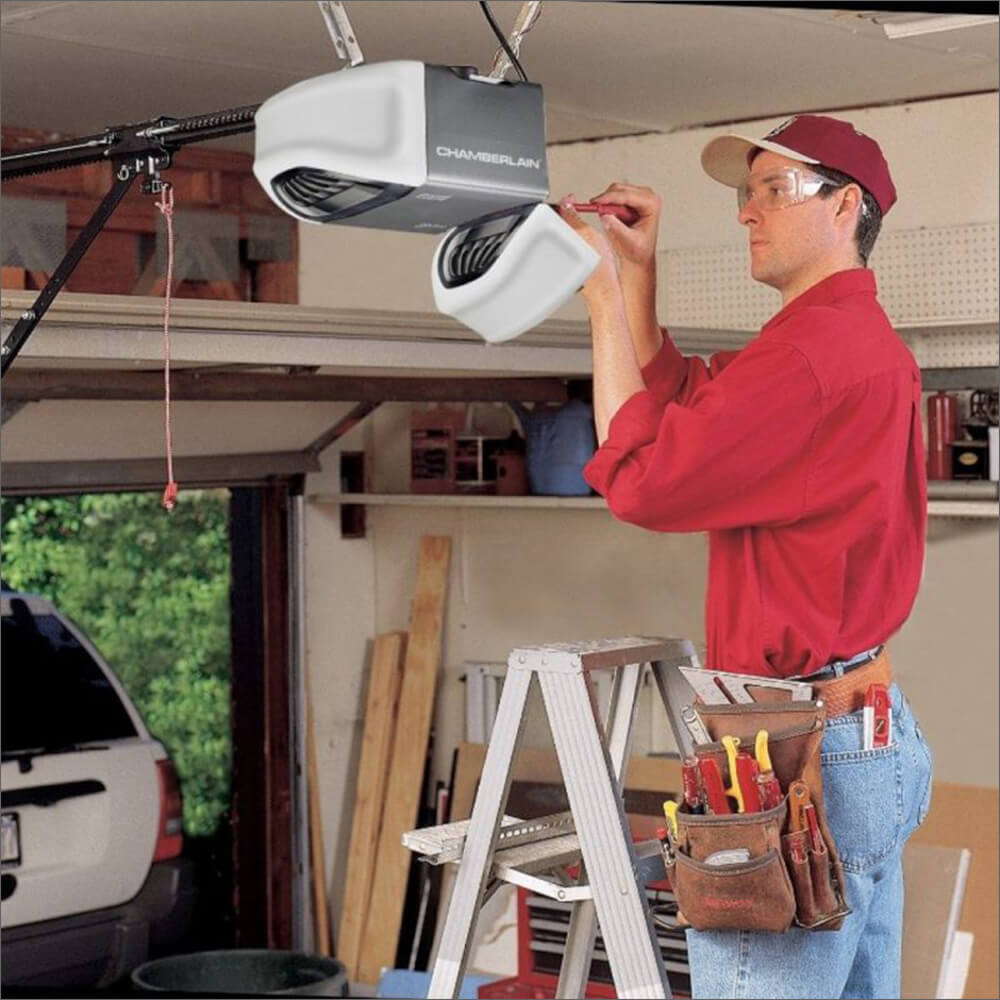 Conclusion
Conclusion
A garage door opener replacement is a vital investment that enhances the functionality, security, and convenience of your home. By understanding the signs that indicate it’s time for a replacement, exploring the different types of openers available, and knowing whether to undertake the replacement yourself or hire a professional, you can make an informed decision that best suits your needs. Additionally, regular maintenance and timely troubleshooting ensure that your new opener remains reliable and efficient for years to come. Embrace the benefits of upgrading your garage door opener and experience a smoother, more secure, and convenient garage operation.
